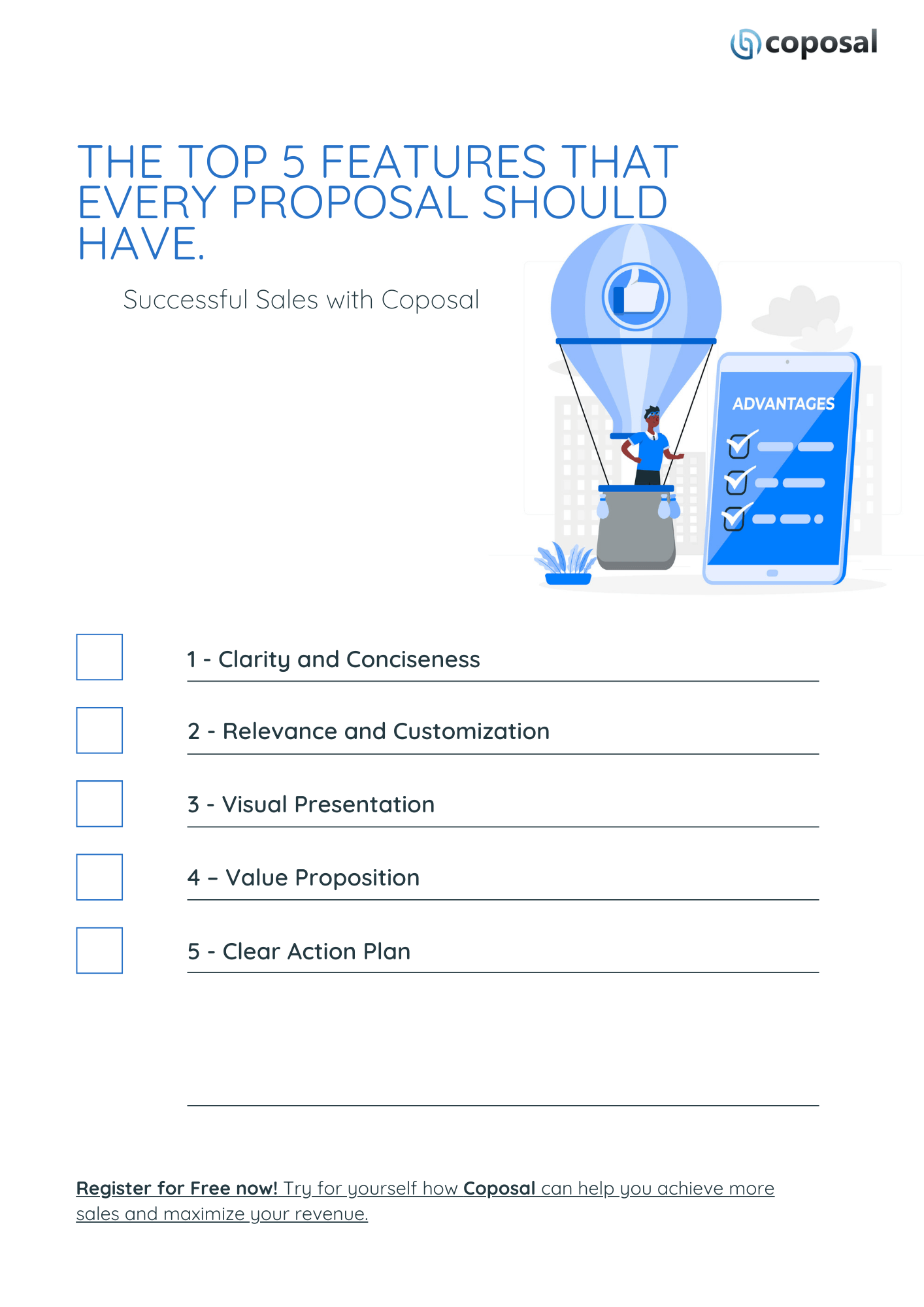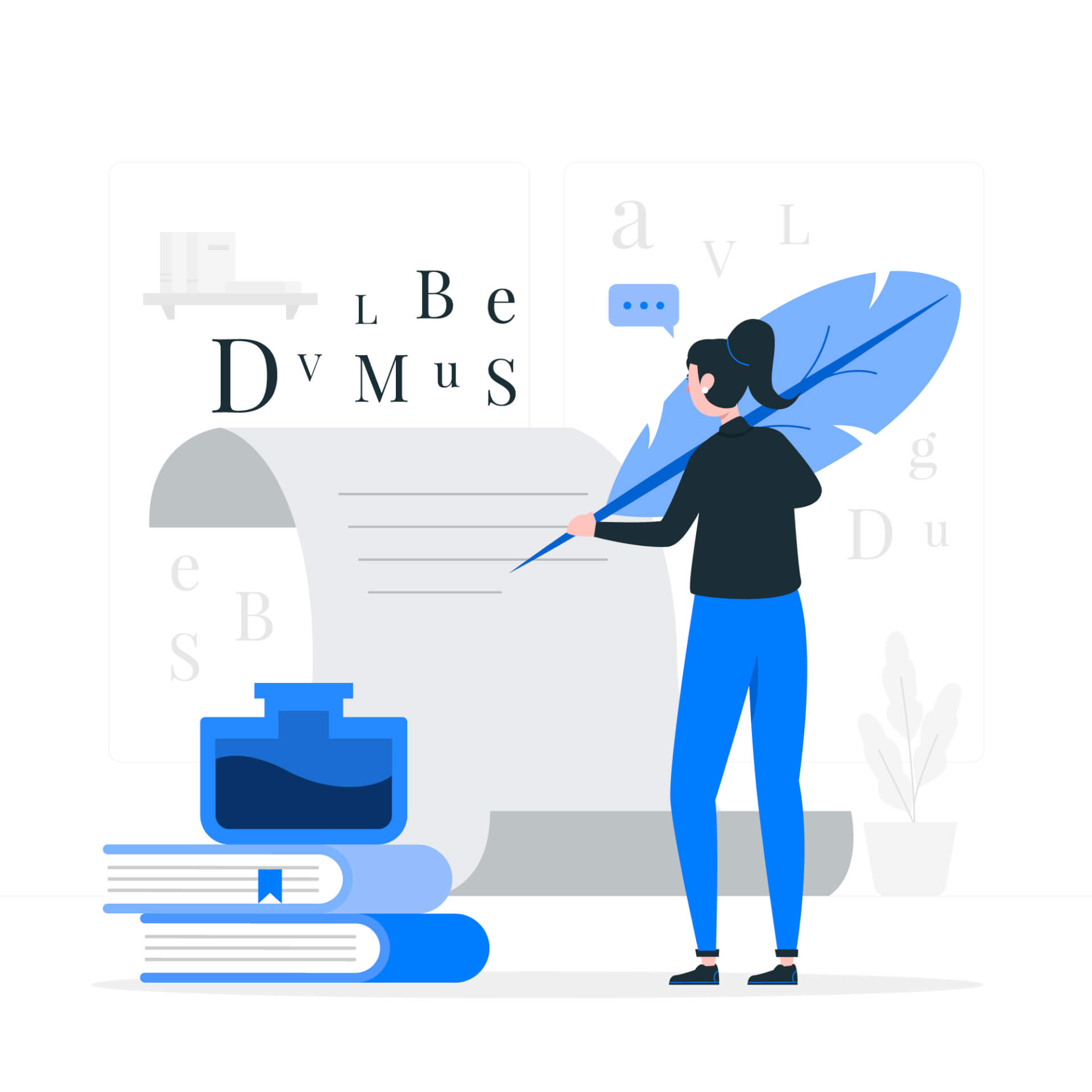 Proposals are important documents in business transactions and serve as gateways to potential opportunities.
Proposals are important documents in business transactions and serve as gateways to potential opportunities.
They offer the opportunity to demonstrate expertise, professionalism, and suitability for the project. A well-developed proposal shows commitment, attention to detail, and understanding of the customer's requirements.
To stand out from the competition and effectively communicate your ideas, certain key features must be integrated into your proposal.
Table of Contents
What defines a proposal?
Crafting a successful proposal is not just about listing services and prices.
It's about creating a compelling narrative that addresses the customer's needs and convinces them to choose your solution over others.
Understanding the elements that distinguish a proposal is crucial for success in winning contracts and securing business opportunities.
Below are our top 5 features that every proposal should have:
1 - Clarity and Conciseness
One of the fundamental features of a successful proposal is clarity. The recipient should be able to quickly and easily absorb the information presented.
Ensure:

Using clear formulations
Your proposal should be easily understandable and free from ambiguities or confusion.
Clear communication ensures that the recipient understands the core of your proposal without misinterpretations.
Avoiding jargon
While it's important to demonstrate expertise in your field, bombarding the proposal with industry jargon can deter the reader.
Instead, opt for clear language that everyone can understand.
Writing concisely
In a world where time is of the essence, brevity is key. Avoid unnecessary elaboration and get straight to the point.
Concise writing not only saves the reader time but also makes your proposal more effective.
2 - Relevance and Customization
A successful proposal goes beyond describing services and features.
It addresses the specific needs and weaknesses of the customer. By demonstrating an understanding of the challenges the customer faces, the proposal can offer tailored solutions that meet the customer's requirements.
Each proposal should be tailored to the specific requirements of the customer.
Ensure:

Understanding customer needs
Take the time to understand the weaknesses, goals, and expectations of your target audience. A generic proposal is unlikely to resonate with the customer as much as one that addresses their individual needs.
Customizing your proposals
Once you have identified the customer's needs, customize your proposal to explicitly address them.
Highlight how your solution aligns with their goals and how it can effectively solve their problems.
Using the appropriate salutation
The appropriate salutation conveys closeness to the recipient and a sense of understanding. Adjust your salutation accordingly when addressing a proposal to consumers or businesses.
3 - Visual Presentation
Incorporating visual elements such as images, charts, and graphs can significantly enhance the clarity and understanding of a proposal.
Visual elements help break down complex information, highlight key points, and make the proposal more appealing and memorable for the customer.
Ensure:

Choosing the right elements
When selecting visual elements for a proposal, it's important to choose ones that are relevant and professional and align with the brand identity.
High-quality images, well-designed graphics, and clear charts can enhance the visual appeal of the proposal and strengthen the professionalism of the company.
Using consistent design
Consistency is crucial when it comes to visual presentation. Ensure that fonts, colors, and formatting are consistent throughout the proposal to create a cohesive and elegant look.
Consistent design reflects attention to detail and professionalism and enhances the overall impression of the proposal.
Using branding elements
Branding elements such as logos, colors, and brand messages should be seamlessly integrated into the proposal. Including brand elements strengthens brand identity and helps increase brand awareness with the customer. Consistent branding across all materials builds trust and credibility with the customer.
4 – Value Proposition
What sets your proposal apart from the competition? Highlighting your unique value proposition is crucial for business success.
Ensure:

Highlighting your value proposition
Whether it's innovative solutions, industry expertise, or exceptional customer service: When you showcase what makes your proposal unique, it can influence the customer's decision in your favor.
Emphasizing unique selling points
Highlight your unique selling points and emphasize them throughout the proposal. Make sure the customer understands why your proposal stands out.
Demonstrating value to the customer
Go beyond listing features to show the value your proposal brings to the customer. How will it improve their business processes, increase efficiency, or boost revenue?
Clearly articulate the benefits that result from choosing your proposal over others.
5 - Clear Action Plan
A clear action plan is essential to outline your approach to implementing the proposed solution.
Ensure:

Defining clear goals
The foundation of any successful proposal is clearly defined goals. Before drafting, it's important to understand the customer's goals, expectations, and desired outcomes.
Clearly outlining these goals helps align the proposal with the customer's vision and increases the chances of acceptance.
Outlining the next steps and timeline
Describe the implementation steps as well as a realistic timeline for completion. This gives the customer confidence that your solution will deliver the desired results.
Providing a roadmap for implementation
In addition to the timeline, provide a detailed roadmap describing how each step will be executed.
This demonstrates thorough planning and instills confidence in your abilities.
Summary
In summary, writing a successful proposal requires careful attention to detail and a focus on key features that resonate with the customer.
By emphasizing clarity, relevance, value proposition, clear action plans, and professional formatting, you can significantly increase the likelihood of attracting potential customers and securing valuable opportunities.
 Reading Tip: If our article has helped you and you want to learn more about what should never be missing in your proposals, read on here: "Pitfalls and other mistakes to avoid in proposal writing
Reading Tip: If our article has helped you and you want to learn more about what should never be missing in your proposals, read on here: "Pitfalls and other mistakes to avoid in proposal writing
Frequently Asked Questions about important features of proposals
What are the key components of a successful proposal?
A successful proposal typically includes clear goals, effectively addresses customer needs, has a unique value, provides detailed results, and includes a strong call to action.
How can I differentiate my proposal from the competition?
To stand out, focus on highlighting your individual strengths, understanding the specific needs of the customer, presenting information clearly and visually, using persuasive language, and providing evidence of past successes.
Is it important to include visual elements in a proposal?
While not mandatory, incorporating visual elements such as images, charts, and infographics can significantly enhance the clarity and attractiveness of a proposal, making it more appealing and understandable to the customer.
How do I effectively address objections in a proposal?
To address objections in a proposal, you need to acknowledge potential concerns or doubts of the customer and provide solutions, assurances, or evidence to address these concerns and build trust in your proposed solution.
What role does proofreading play in writing proposals?
Proofreading is crucial in writing proposals to ensure clarity, coherence, and professionalism. It helps identify grammar errors, spelling mistakes, and inconsistencies, ensuring that the proposal effectively conveys the intended message.
Can I use templates for writing proposals?
While templates can be helpful as a starting point, it's important to customize proposals to meet the specific needs and requirements of each customer.
Tailoring the proposal to the individual challenges and goals of the customer enhances its effectiveness and chances of success.